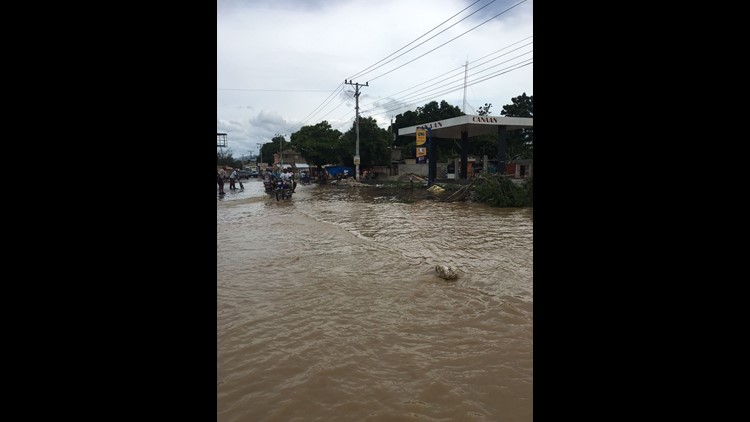Hurricane Matthew is a powerful storm that’s aiming for the United States.
It’s too soon to say with certainty whether Matthew will actually make landfall in the US. And it’s too soon to pinpoint the exact path the storm will take as it heads northwest.
But comparing Matthew’s projected track with the paths of past hurricanes shows what could happen if the storm hits the Southeast.
Matthew was a Category 4 storm packing 140 mph winds as it pummeled the Bahamas Thursday.
The latest projections indicate it could make landfall in Florida early Friday. And some models suggest the state could get hit twice.
Here’s a look at the projected path of Hurricane Matthew, compared with several other storms:
2004: HURRICANE JEANNE
US landfall location: Near Port St. Lucie, Florida
Wind speed when it made landfall in the United States: 120 mph (Category 3)
US deaths: 5
US damage: $7.66 billion
How it compares to Matthew: Hurricane Jeanne made landfall between West Palm Beach and Melbourne, Florida. That same stretch of the coast is where Hurricane Matthew could make landfall.
The big difference with this storm: Jeanne moved inland and weakened quickly. This led to significant damage at the point of landfall, but limited the worst of the damage to that area. Matthew is expected to move directly up Florida’s coast. That would increase the total area experiencing the destructive winds near the storm’s eye. And it would increase the amount of time it takes for Matthew to weaken.
1999: HURRICANE FLOYD
US landfall location: Near Cape Fear, North Carolina
Wind speed when it made landfall in the United States: 103 mph (Category 2)
US deaths: 56
US damage estimate: $6.9 billion
How it compares to Matthew: Floyd had a similar South to North path as it passed Florida, but that storm was slightly weaker and farther away from the Florida coastline than what we currently expect from Matthew.
This means Matthew could cause more damage along the coast of Florida and Georgia. Hurricane Floyd made landfall in North Carolina, and that’s where a majority of the damage and fatalities occurred. It’s not clear yet whether Matthew will hit North Carolina.
1979: HURRICANE DAVID
US landfall locations: North of West Palm Beach, Florida, and south of Savannah, Georgia
Wind speed when it made landfall in the United States: 98 mph (Category 2)
US deaths: 5
US damage: $900 million (in 2005 dollars)
How it compares to Matthew: So far, the biggest similarities between Hurricane David and Hurricane Matthew are the tracks both storms took through the Caribbean.
After passing through the Bahamas, Hurricane David scraped the east coast of Florida without moving significantly inland, much like Hurricane Matthew is expected to do. This allowed David to make it up the entire coast of Florida without experiencing much weakening, remaining a Category 2 storm up until the point it made another landfall south of Savannah, Georgia.
The biggest difference in the two storms is strength. Hurricane David weakened extensively, from a Category 5 to 1, over the mountainous countries of Haiti and the Dominican Republic. Matthew has made it through the region without much weakening. So while David moved north over the east coast of Florida as a Category 2, Matthew is expected to do so as a Category 3 or 4. Another difference: Florida has changed significantly since that storm hit nearly 40 years ago. Now, there are many more buildings along the state’s coast.



